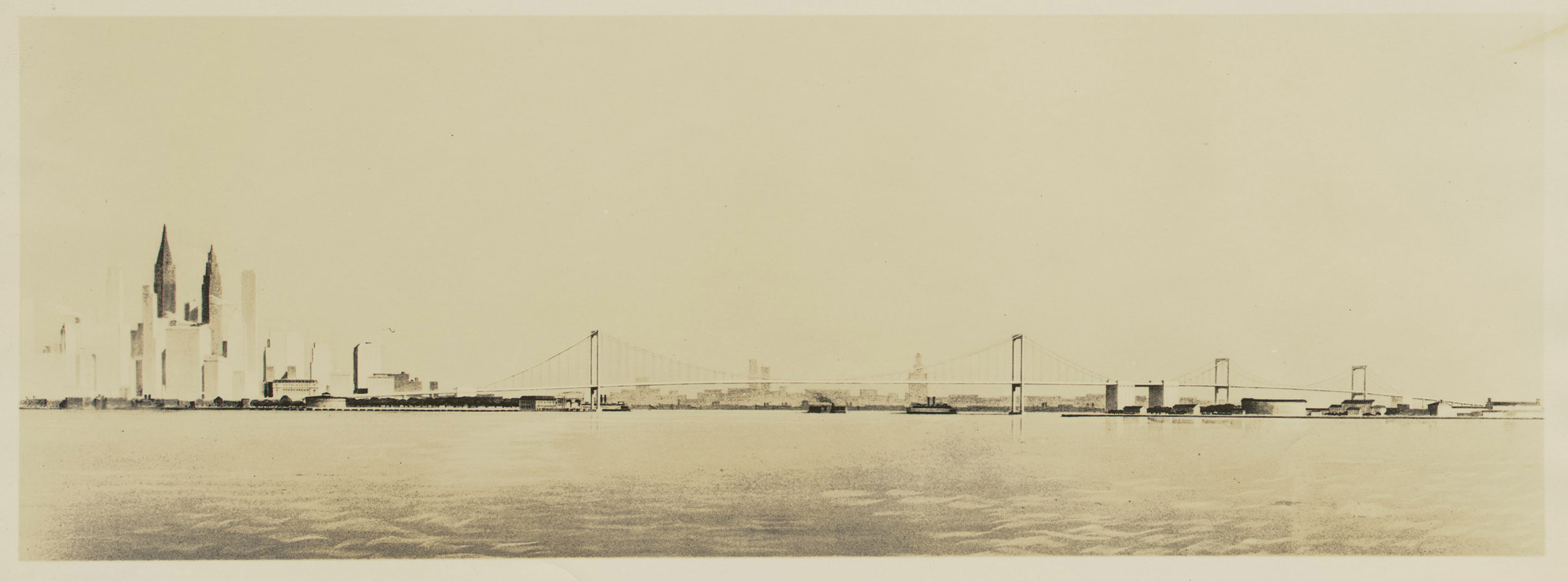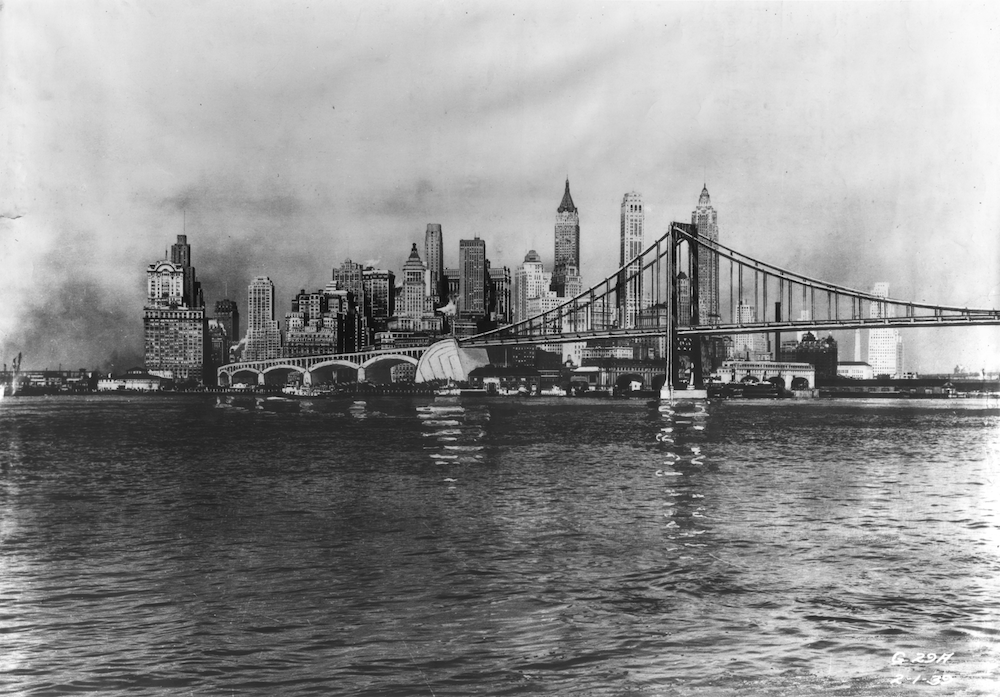Brooklyn Battery Bridge
A recent blog post from the Municipal Archives details Robert Moses' fight to build a bridge where the Battery Tunnel stands today. Some background for those who are not familiar with the story; In 1939 Moses proposed constructing a Brooklyn Battery Bridge connecting Battery Park with Red Hook Brooklyn. The bridge would have used Battery Park for the bridge approach, demolishing Castle Clinton. Opposition to the bridge eventually lead to the creation of the Brooklyn Battery Tunnel (1950), as the blog post explains, was Moses' most bitter defeat.
The fight stretched from Albany to City Hall to the halls of the White House and President Franklin Delano Roosevelt’s War Department... Documents, reports, letters and even Western Union telegrams in the Municipal Library and Archives paint a vivid picture of how a master builder used to getting his way by cajoling and bullying his opponents finally met his match... Moses wrote that it was “indisputable” that a bridge would be better, cheaper and more efficient than the tunnel... The bridge, with all necessary approaches, can be built for about $41 million, as opposed to $84 million for a tunnel, Moses proclaimed. He said the bridge, which would sit 600 feet east of Governor’s Island, would be six lanes, as opposed to four in the tunnel; would cost under $350,000 in annual maintenance, less than half of the tunnel’s yearly upkeep; could be financed through bonds “without the contribution of a nickel” of city or federal money; could be built in 2 years and 3 months, rather than 3 years and 10 months for the tunnel, and would be 130-to-150 feet above the river so as not to interfere with navigation. Lacking funds to construct the tunnel, Mayor La Guardia quickly lent his support for the bridge.
The powerful West Side Association of Commerce quickly joined the opposition, as did the Real Estate Board, the Citizens Union, the American Institute of Architects and the Regional Planning Association (RPA), headed by George McAneny, a former City official, municipal reformer and preservationist active in city politics.
On March 31, 1939, Harold Lewis, the RPA’s chief engineer, issued a letter strongly opposing the bridge plan, saying that a “series of vehicular tunnels of relatively small capacity and constructed progressively as demands require is a far better solution” than an enormous bridge. The RPA contended that the proposed site was “not a natural one for the bridge and its approaches in Manhattan would cause unjustifiable defacement and make impossible … improvement of Battery Park.”
President Roosevelt’s War Department needed to approve the project before work could begin because there were War Department facilities on Governor’s Island and Treasury Department facilities in the Battery. There also was concern that the bridge would be a wartime target, impede shipping access to the Brooklyn Navy Yard and, Caro wrote, a feeling that FDR wasn’t too enthusiastic about it.
The Brooklyn Battery Tunnel opened in 1950. You can read the full Municipal Archives blog post here.
Battery Bridge aerial view
Battery Bridge perspective. Municipal Archives.
Battery Bridge rendering.
Construction on the tunnel in Red Hook Brooklyn. Municipal Archives.
Triborough Bridge & Tunnel Authority, 1950.
Aerial photograph of Red Hook, Brooklyn-Battery Tunnel, construction. Brooklyn Daily Eagle photographs, Brooklyn Public Library Collection.
Battery Bridge Construction. Municipal Archives.
From the MTA Bridges & Tunnels Special Archive, rarely seen film footage from the building of the Brooklyn-Battery Tunnel.
Brooklyn Battery Tunnel
Triborough Bridge and Tunnel Authority,










